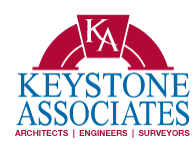
Keystone Associates is pleased to announce that Worcester Central School District’s Addition and Renovation Project has been selected for publication in Penton Media’sAmerican School & University® 2012 Architectural Portfolio. The project is featured in the November 2012 edition of the magazine and also on the web at www.SchoolDesigns.com. An annual competition honoring education design excellence, the Architectural Portfolio spotlights projects representing today’s most effective learning environments.
Keystone Associates assisted the District in a referendum to include a new bus garage, major renovations to the existing 72,000 SF building, a 35,600 SF addition to meet the educational needs of the District, and the reconstruction and enlargement of the athletic fields. Although the District did not pursue LEED certification, the owner requested energy efficiency and sustainability practices to be incorporated.
A jury of American Institute of Architects (AIA) Committee on Architecture for Education members and education administrators evaluated submissions from architectural firms, schools and universities across the country. One hundred forty-eight projects were chosen for publication in AS&U, a monthly educational facilities, purchasing and business administration magazine reaching 57,000 facility planners, school and university administrators and architects with this issue. This is the 30th year the competition has been held.
The jury considered the following specific criteria to make its selections: student-centric 21st-century schools, community use/partnerships, sustainability/energy efficiency, design that is reflective of culture and community, design that respects its environment, flexibility, maintenance and materials. In addition, the jury considered that kids want to learn where they live – that the design should consider new trends and users should enjoy the environment, incorporating informal spaces for learning, such as the outdoors. The jury also commented that the design process should be inclusive and explain how a facility has to change to those who may be resistant.







